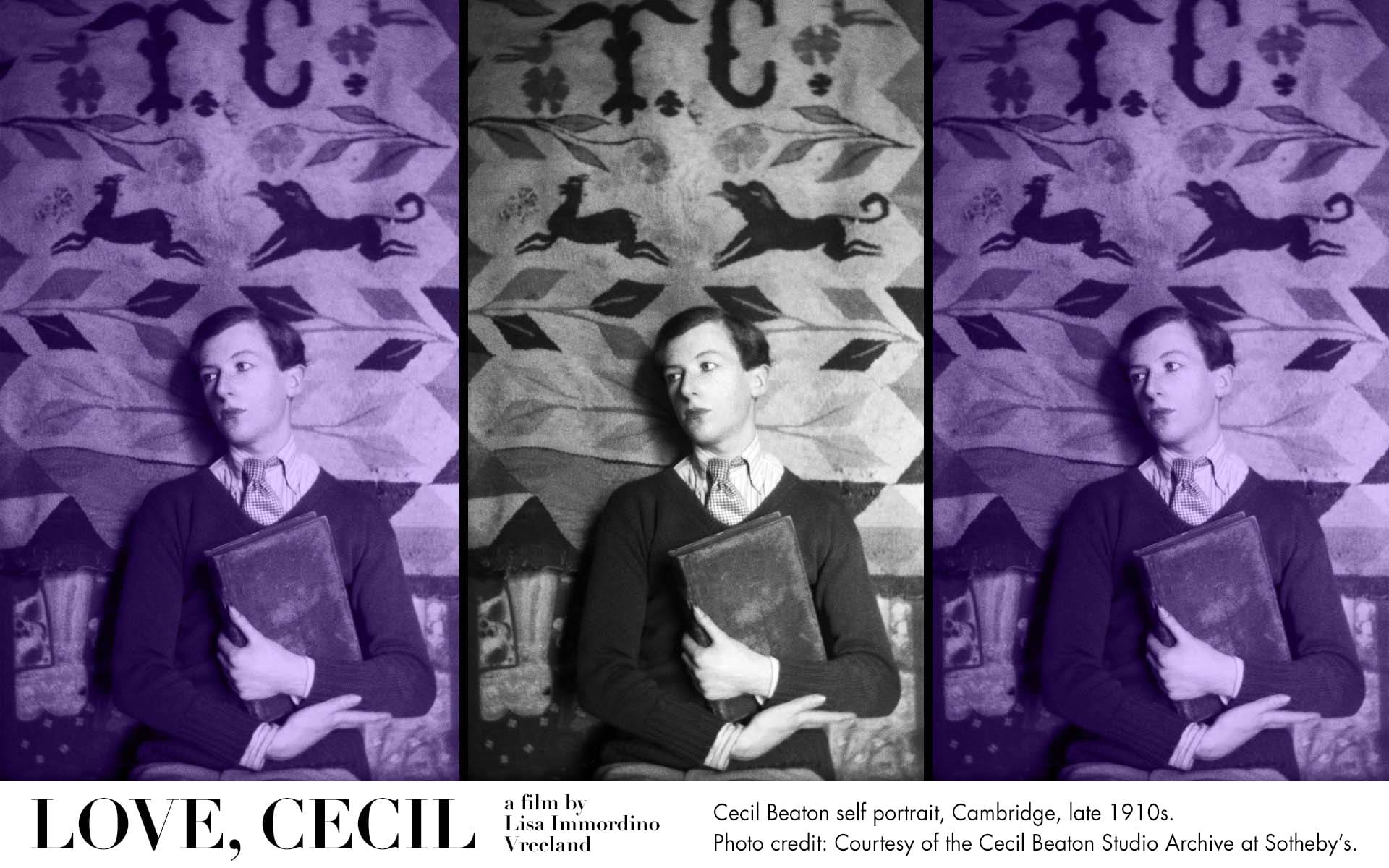
In college, I watched over 20 musicals in a two-week period for a paper. I loved a few of them and liked most, but I hated one. It was 1958’s Best Picture winner Gigi. Before that, my least favorite musical had been 1964’s My Fair Lady. Still, while their stories are unforgivably regressive and the music mostly bad, the sets and costumes are lush and colorful. As it turns out, the look of both films were done by the same man: British photographer and “aesthete,” Cecil Beaton.
Beaton is the subject of director Lisa Immordino Vreeland’s new documentary, Love, Cecil. Using Beaton’s photographs, excerpts from his own diaries read by actor Rupert Everett and interviews, Vreeland gives us a portrait of a true Renaissance man whose artistic eye influenced both art and politics.
Though the film mostly flows chronologically from Beaton’s university years to his death in 1980, it begins with an overview that makes him seem like an almost Forrest Gump-like figure in 20th Century culture. From his revolutionary fashion photography for Vogue in the ‘30s to his acquaintance with Mick Jagger in the ‘70s, the amount of Beaton’s work to which Vreeland and editor Bernadine Colish have access is the film’s biggest asset. While the hundreds of photographs we see onscreen convey the breadth of his work, the interviews, voiceover and clips of Beaton himself give them context. What becomes clear the more we hear from Beaton (who Everett gives a somewhat detached and occasionally smug tone) is an opinionated artist who almost relished in criticizing the people he met.
Indeed, it’s thrilling to hear a contemporary’s thoughts on some of the most iconic figures of the last century. In an interview, Beaton refers to a rivalry with writer Evelyn Waugh and an intense dislike for Noel Coward he can’t quite explain. He also hates Richard and Elizabeth Burton for their “crass bad taste” and worst of all, describes Katharine Hepburn as a, “dried up boot.” He’s not all critical of course–he refers to Mick Jagger as “sexy yet completely sex-less”–but the film seems to revel in his sharp assessments seemingly irreproachable icons.
However, while Vreeland and her interviewees seem to take a certain degree of joy in Beaton’s bitchiness, the portrait we get of him here isn’t all positive. Throughout, those who knew him seem to point out the same flaws in Beaton’s character. Despite being what photographer David Bailey calls, “a terrible social climber,” Beaton also tended to sabotage his relationships—both public and personal. Though his possibly-romantic relationship with Greta Garbo and his betrayal of her thanks to a photospread in Vogue is probably the juiciest example, the most striking comes before that, just before the beginning of World War II.
In a 1938 illustration accompanying one of his articles, Beaton used an anti-semitic slur (unconsciously, he claims) in the details of the illustration, the backlash was immediate and led to his firing. Spurred by that incident and the resulting blow to his place in high society, Beaton spent the war years trying to make amends by photographing the realities of the Blitz and eventually regained his position in society in the post-War years by becoming the official photographer of the British royal family.
His work with the royal family is perhaps both the pinnacle and biggest symptom of what Beaton would rather coyly describe as his, “eye to publicity.” Beaton was born if not working class, then at least out of high society and much of his work is driven by his desire to become part of it. For example, his friendship and theater work with socialite Stephan Tennant at university was just as much about his own artistic expression as palling around with people with more privilege. It’s an intriguing motivator and one Vreeland unfortunately leaves largely unexplored.
Though Cecil Beaton’s art is what made him famous, the film about him in some ways leaves what drove him to work a mystery. Even with incredible access to his output, his personal diaries and his remaining friends, Vreeland is perhaps too respectful of her subject’s secrets. She refers to Beaton’s love affairs with men, but she doesn’t explore how living in England in a time when homosexuality was still illegal (and often punishable with sterilization) affected him.
Love, Cecil may be an excellent showcase of Beaton’s work, but it almost replaces him here. We know the facts about his life but get no true sense of who he is. Perhaps that quality is ultimately fitting for an artist who dealt so much with the surface of things, but it leaves the audience feeling robbed of something more.
Rating: 6.5/10

